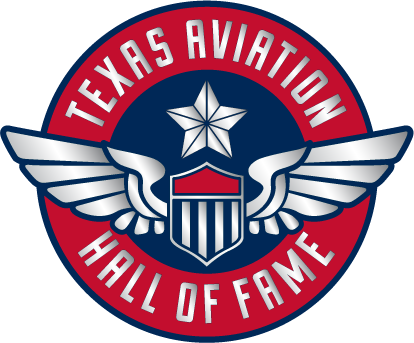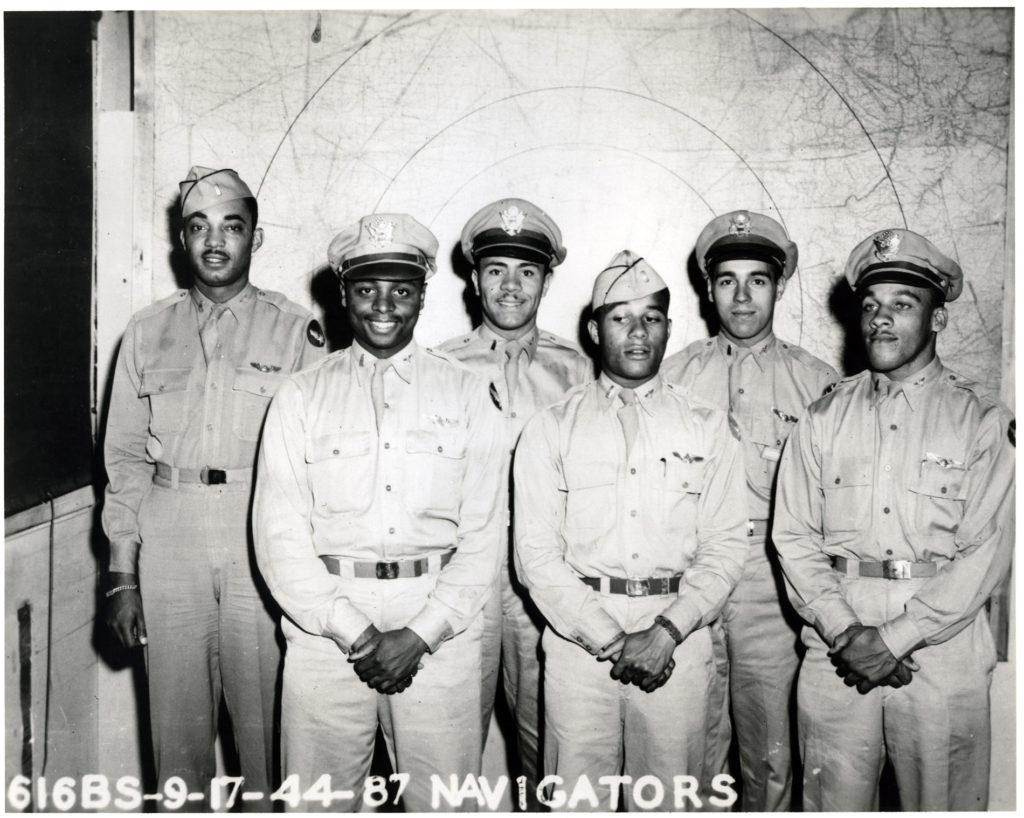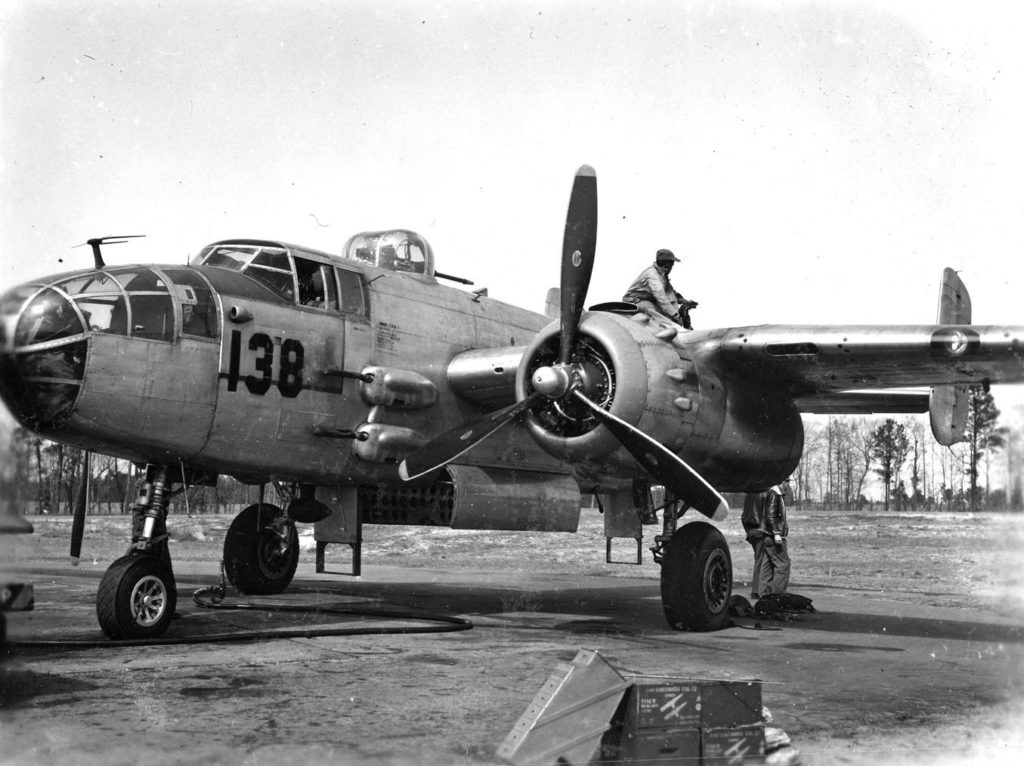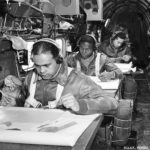Most people who know about aviation history and the Second World War know of the Tuskegee Airmen; the pioneering group of Black pilots trained at Tuskegee Institute in Alabama, who went on to fly and fight in the skies over Europe. Many books and several feature length films have told the story of how they struggled against racism and discrimination at home while they fought for the right to lay their lives on the line for their country. Known as the “Red Tails” for the distinctive markings on their P-47 Thunderbolt and P-51 Mustang fighters, the men of the 332nd Fighter Group proved to be the equal of any other fighter pilots and made history in the process.
What is less known is that Tuskegee Airmen also comprised a Bombardment Group, and many Blacks were trained to fly and operate four squadrons of B-25 Mitchell bombers. Designated the 477th Bombardment Group, Tuskegee’s “bomber boys” never got to fly in combat, and as such, never received the recognition that the fighter pilots did. Just like the fighter pilots, the bomber crews fought the same racism and prejudice as they broke new ground, but their struggle had a different ending.
As part of the effort to field an all-Black bomber group, the U.S. Army Air Force had to train men to perform a wider range of jobs beyond just pilots and mechanics. They had to have bombardier-navigators, flight engineers, radiomen and gunners. Since the Tuskegee Institute was operating at full capacity to produce pilots, the other training had to be done elsewhere, and Hondo Army Airfield in Texas was selected as the site for training Black navigators.
Opened on July 4th, 1942 Hondo was built by the H.B. Zachry Company and was the largest navigation school in the world at the time. Over 14,000 cadets would earn their navigator’s wings there before the end of the war. The first group of Tuskegee Airmen to train at Hondo arrived on October 25, 1943, and was made up of officers who had “washed out” of the flight-training program at Tuskegee. Not wanting to waste trained officers, the Army sought new jobs for them and these men were happy to remain flying, even if they weren’t employed as pilots.
Unlike Tuskegee, where the whole base was made up of African-American soldiers and airmen, Hondo was a White training base, and Texas was still part of the segregated south. The Black navigator cadets were kept apart from the White cadets, taking lessons in separate classrooms, being housed in separate barracks and eating in separate mess facilities. All cadets participated in physical training together, although in separate formations. Occasionally the two groups were allowed to compete against each other in friendly sporting activities. As one cadet remembered, “We weren’t allowed in the cadet club. We had to go to the back door to order food. A couple of guys who were light-skinned enough to pass for white went to the front door and ordered. We considered that a victory.”
Despite being denied entrance to the cadet club, Hondo did offer some benefits that were lacking at other bases in the southwest. During breaks in the training the cadets were taken by bus to nearby San Antonio. There, they were able to interact with the Black community for entertainment and religious services courtesy of the Black USO and local churches. At airfields such as Yuma, Arizona and Roswell, New Mexico, where Black crewmembers also trained, these types of community interactions were impossible.
The first class of Tuskegee navigators from Hondo graduated on February 26, 1944 after flying a training mission to New York City and back. Their flight in three Lockheed C-60 Lodestars made national news when they landed at LaGuardia airport, had lunch with local officials, went to City Hall to meet with Mayor Fiorello LaGuardia and attended a reception in Harlem. Upon graduation, many of the men went on to bombardier training at San Angelo Army Airfield or Midland Army Airfield in Texas. Like Hondo, they were subject to segregation at these bases, too. After months of training on the Norden bombsight and aerial bombing practice the men joined the pilots of the 477th Bomb Group to train as a unit.
Sadly, the Tuskegee Airmen who trained in Texas never saw combat. Unlike the fighter pilots who trained under Col. Noel Parrish at Tuskegee, the 477th was assigned to Col. Robert Selway, a white segregationist whose bigoted command structure led to dissatisfaction and low morale among the crews. Issues came to a head when Selway decided to improperly restrict the officer’s club at Freeman Field, Indiana, (where the 477th was training) to Whites only. A group of Black officers entered the club on April 9, 1945, sparking a protest known as the “Freeman Field Mutiny.” Over 100 Tuskegee Airmen were arrested and three were court-martialed, but more importantly, Army Air Force officers opposed to the training of Blacks used the incident to curtail the 477th Bomb Group and keep them out of the war they had struggled so hard to get a chance to fight in.
Note: This May 5th, Brigadier General Noel Parrish, who commanded Tuskegee Army Airfield and championed the rights of the men under his command, will be inducted into the Texas Aviation Hall of Fame. He will be joining the Tuskegee Airmen who were Texans, and H.B. “Pat” Zachry, who built the airfield at Hondo, Texas.



